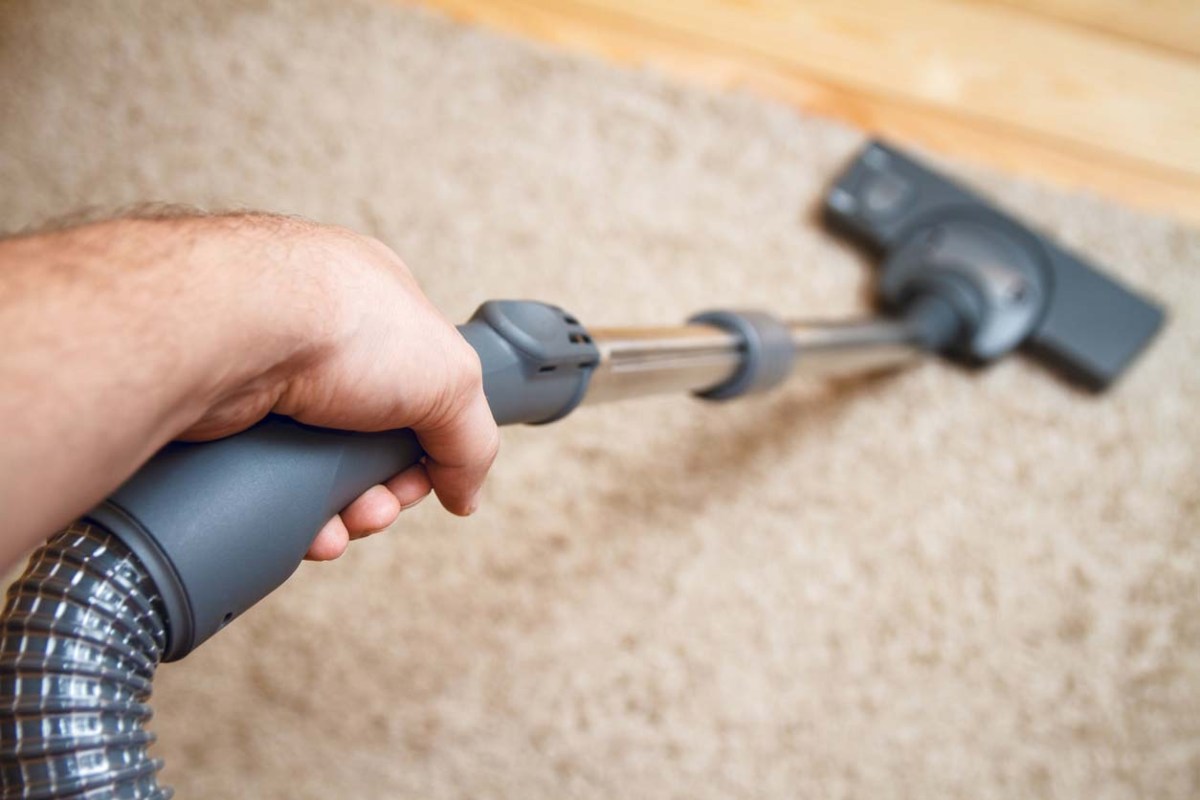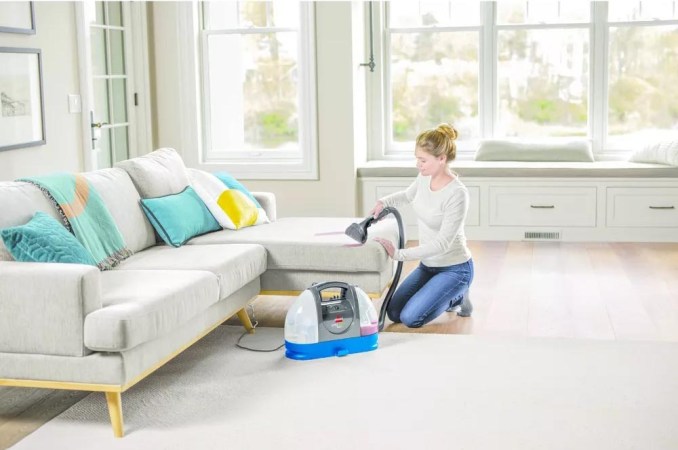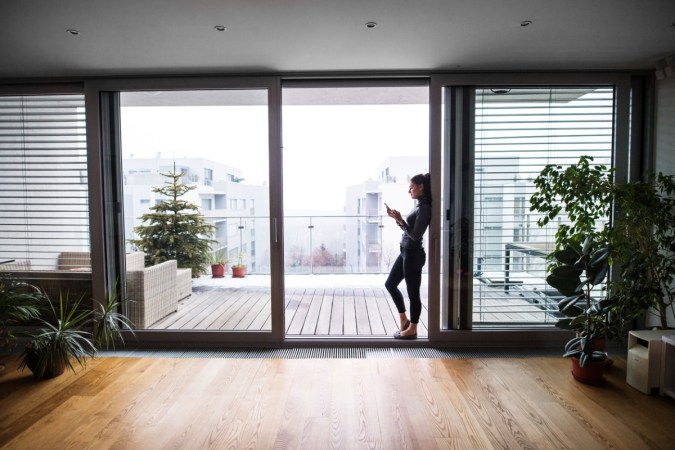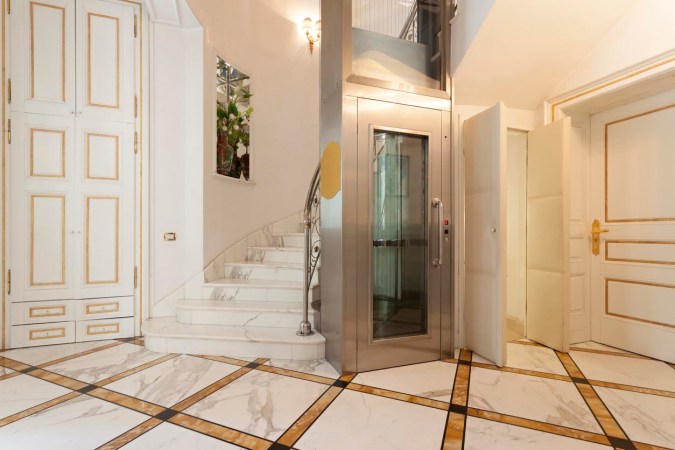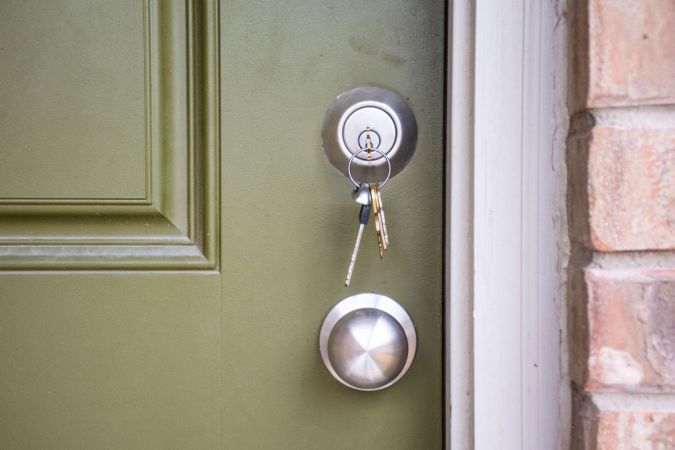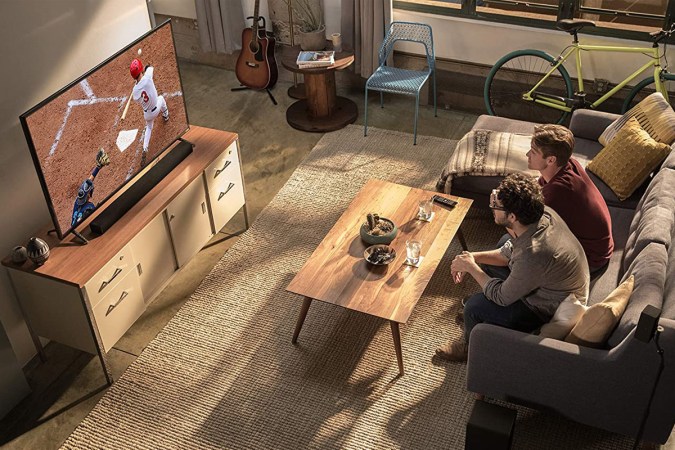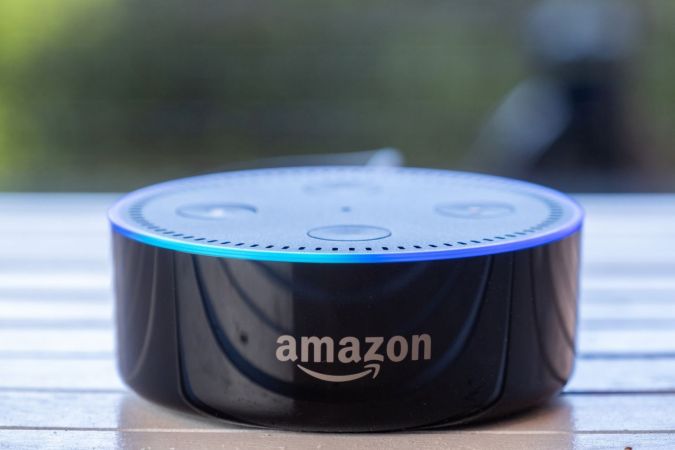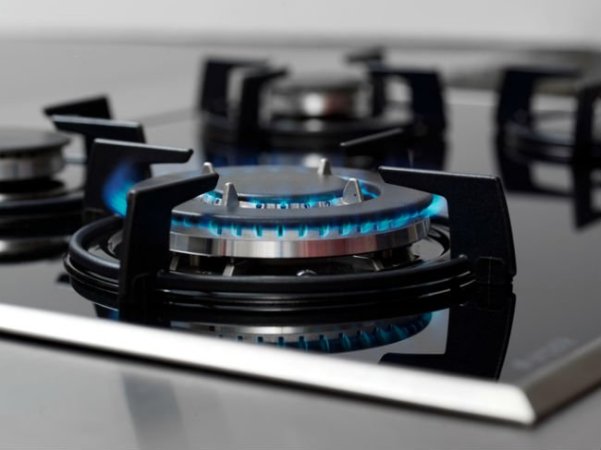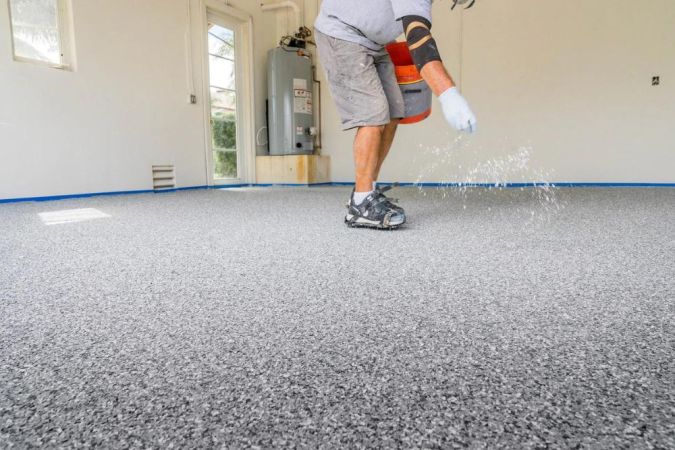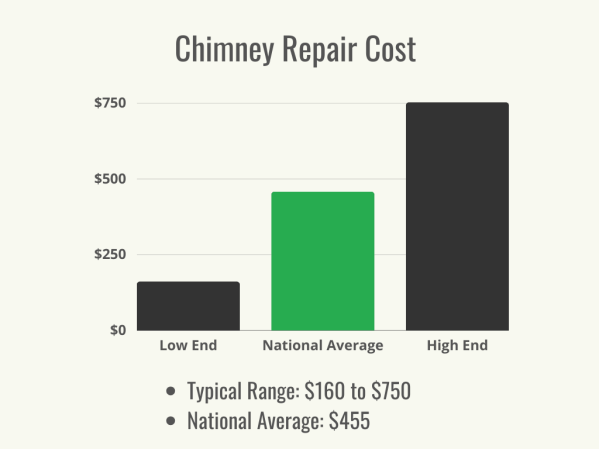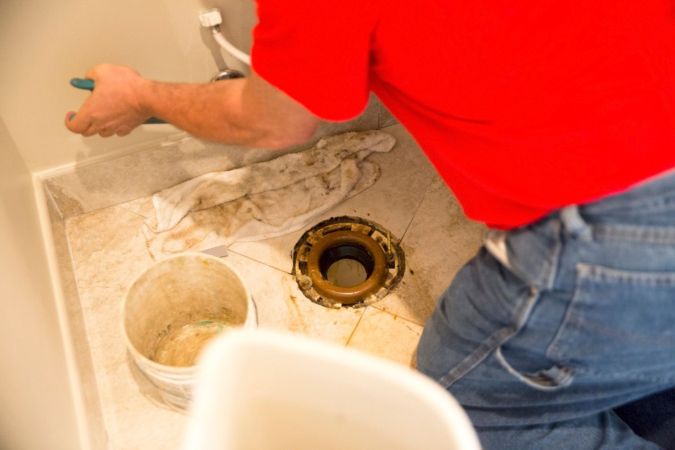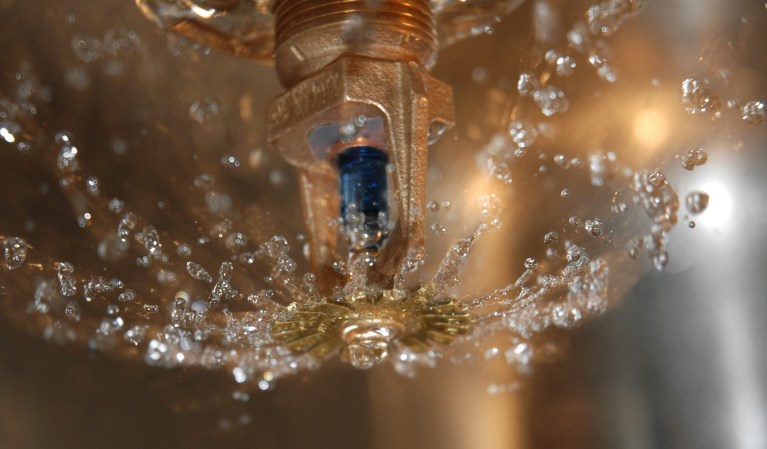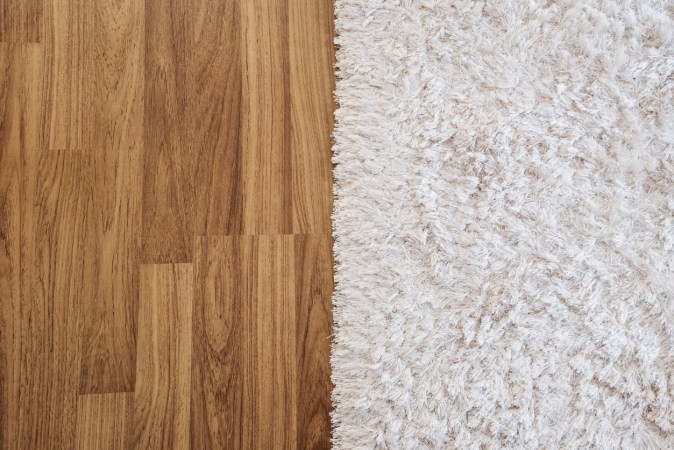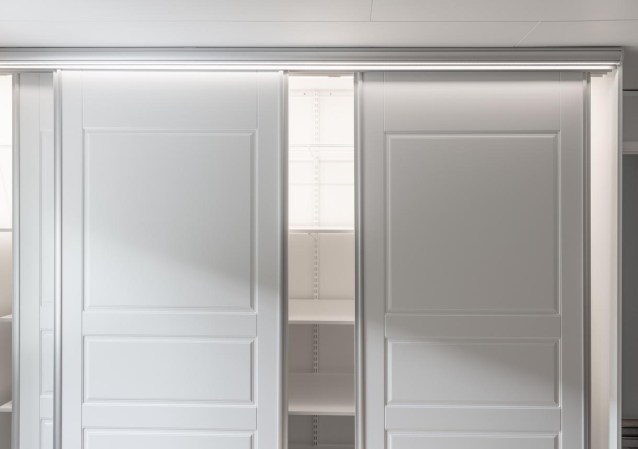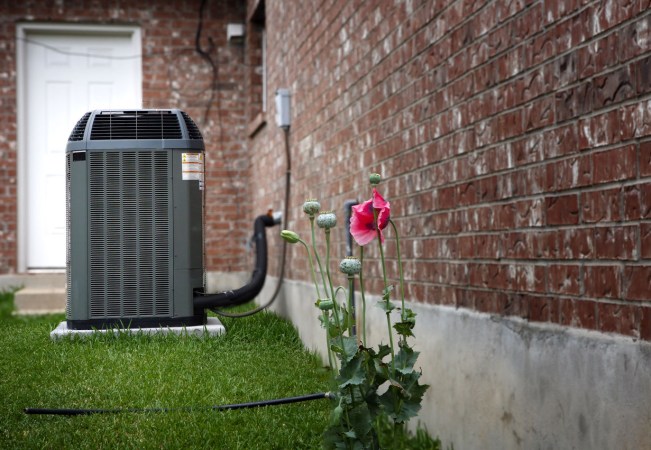We may earn revenue from the products available on this page and participate in affiliate programs. Learn More ›
Highlights
- A central vacuum system cost averages $1,582, though a typical range for parts and labor is $1,098 to $3,500.
- The type and brand of vacuum, additional parts and add-ons, labor, and whether it’s being installed as a retrofit or in a new construction will all play into the total cost of installation.
- A central vacuum system makes up for the price in convenient cleaning, improved air quality, decreased noise, and a longer lifespan than a traditional vacuum.
- Due to the difficulty of installing tubing between the walls of an existing home and the need for careful electrical work, most homeowners feel more comfortable leaving the installation to a professional.
Vacuums are an essential tool in the quest for a neat and tidy home. But while they’re effective at removing dust, crumbs, pet hair, fuzz, and other debris, many vacuums can be heavy and cumbersome. Users are often inconvenienced by having to carry them up and down stairs and needing to frequently empty the canister. Not so with a centralized vacuum system, which is a lifestyle upgrade for any home.
A central vacuum system relies on a network of tubes or pipes that run through a home’s interior walls with suction outlets placed strategically throughout the home. The pipes converge on a central power unit and large debris collector that’s usually located in a basement, garage, or utility room. Vacuuming becomes as easy as plugging the vacuum hose into any of the suction outlets, turning on the vacuum hose, and sucking up the dust bunnies and debris around the house.
HomeAdvisor reports that a central vacuum system costs between $1,098 and $3,500, with a national average cost of $1,582. Homeowners can learn more about central vacuum system costs, the benefits of making the switch, and some money-saving tips for installation day.
Factors in Calculating Central Vacuum System Cost
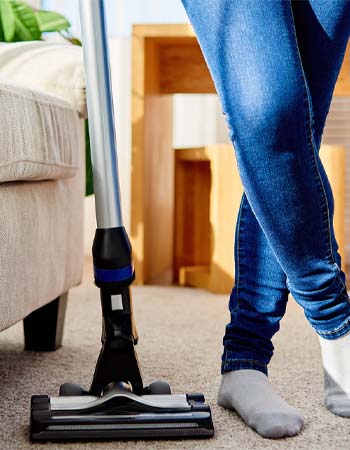
Calculating the average cost of a central vacuum system installation involves several key factors. Homeowners interested in a central vacuum system will want to evaluate the various types of vacuums and brands in addition to any additional parts or add-ons they prefer.
Vacuum Type
There are two main types of home central vacuum systems: cyclonic and filtered. Cyclonic central vacuum systems cost between $600 and $3,500 for both the system and the installation fees. This type of vacuum uses spinning cyclone technology for debris collection. Some models vent outside, while unvented models do not. Unvented central vacuums require more maintenance and cleaning since the fine particles can stick to the motor.
Filtered central vacuum systems cost $1,000 to $3,500 for both the system and the installation. This type comes equipped with paper or cloth filters and is available in bagged or bagless options. Filtered central vacuums have numerous filters that help keep the motor free from the fine particles that are sucked into the debris receptacle. However, the bags will need to be changed twice a year.
Vacuum Brand
There are multiple central vacuum system manufacturers. Several factors can influence a brand’s pricing structure, starting with its reputation. Premium brands known for higher quality can charge higher prices, while lesser-known brands will likely come with lower pricing.
Brands that offer longer extended warranties sometimes have higher pricing. The same is also true for companies that design vacuums with advanced technology features, such as smart-home integration or enhanced filtration systems.
Finally, well-known brands tend to have more easily accessible replacement parts and feature a broader range of accessories. Both advantages often translate to higher pricing.
| Vacuum Brand | Average Cost (Materials Only) |
| Beam | $400 to $2,000 |
| Electrolux | $400 to $2,000 |
| RhinoVac | $300 to $800 |
| VacuMaid | $200 to $800 |
Parts
Central vacuum system parts consist of mandatory or optional accessories, all of which have varying prices that contribute to the overall cost of the system. These cost estimates are for parts only.
- Hose variations: Detachable hoses are more affordable, while the pricier retractable options are more convenient. Standard detachable hoses with a length of 30 feet cost between $50 and $250 each.
- Power brushes: Powered brushes are more expensive but also more efficient when they’re also plugged into a standard power outlet to ensure full suction power. However, standard brushes are more flexible in terms of outlet placement and have a lower price point. Homeowners usually pay between $100 and $500 per power brush.
- Power units: As the heart of a central vacuum system, the power unit or motor is usually the most expensive part. Prices range from $200 to $2,000 depending on the size, wattage, and power ratings.
- Suction outlets/ports: Outlets can be customized to blend with a home’s decor and cost between $10 and $25 each.
- Tubing: Tubing is essential for carrying debris from the floor to the debris collector. These tubes usually cost between $1.50 and $30 per linear foot. PVC tubing is the more affordable option. However, it’s more likely to clog compared with more expensive flexible tubing that can bend more easily around corners.
- Vacuum attachments: Different attachments work better on different floor types, whether it’s tile, hardwood, or carpet. Additionally, some users may be interested in tools designed to clean upholstery, crevices, or pet hair. Each attachment costs between $10 and $100.
Labor
Installing a central vacuum system isn’t really a DIY job. In nearly every scenario, the installation is best done by a specialized technician or company. While this option offers convenience and a reliable installation, it also tacks on labor fees.
Labor costs can vary based on the type of central vacuum system and specifics of the job, such as the location of the power unit and how many outlets are desired. The size of the home can also influence how much labor costs.
Labor typically averages about $950, though some homeowners will pay more or less than that. It’s important to remember that labor costs can vary by region. Knowing an area’s cost of living can help a homeowner better estimate labor costs for a central vacuum system installation.
New Construction vs. Retrofit
A central vacuum system’s cost can vary depending on whether it’s being installed in an existing home or new construction. In new construction, installing a central vacuum system tends to be easier since the walls, floors, and ceilings are easily accessible. With straightforward access for installers to lay the tubing between the walls and connect it to outlets, the installation process is quicker and less intensive.
On the other hand, retrofitting a central vacuum system into an existing home can be more complex. Navigating through finished walls, floors, and ceilings creates additional labor in the form of cutting, patching, and painting. For homes of similar size, retrofit installations tend to cost twice as much as those in new construction.
Add-Ons
Add-ons, much like attachments for portable vacuums, enhance the versatility and convenience of a central vacuum system. However, they also add to the overall installation cost.
For example, an extension tube can provide additional length, making it easier for homeowners to reach higher. Additional extension tubes cost between $20 and $60.
A pet brush is another popular add-on that’s specially designed to pick up pet hair from the floor, furniture, and other fabrics. Homeowners will likely pay between $50 and $100 for this feature.
A dedicated carpet brush can help prevent damage to more delicate materials and fibers. Designed for cleaning softer fabrics and carpets, a carpet brush costs between $100 and $500.
Automatic dustpans are typically installed under kitchen or bathroom cabinets. They make it simple for homeowners to sweep dirt and crumbs to the opening where they are sucked away to the receptacle. Automatic dustpans usually cost between $250 and $500.
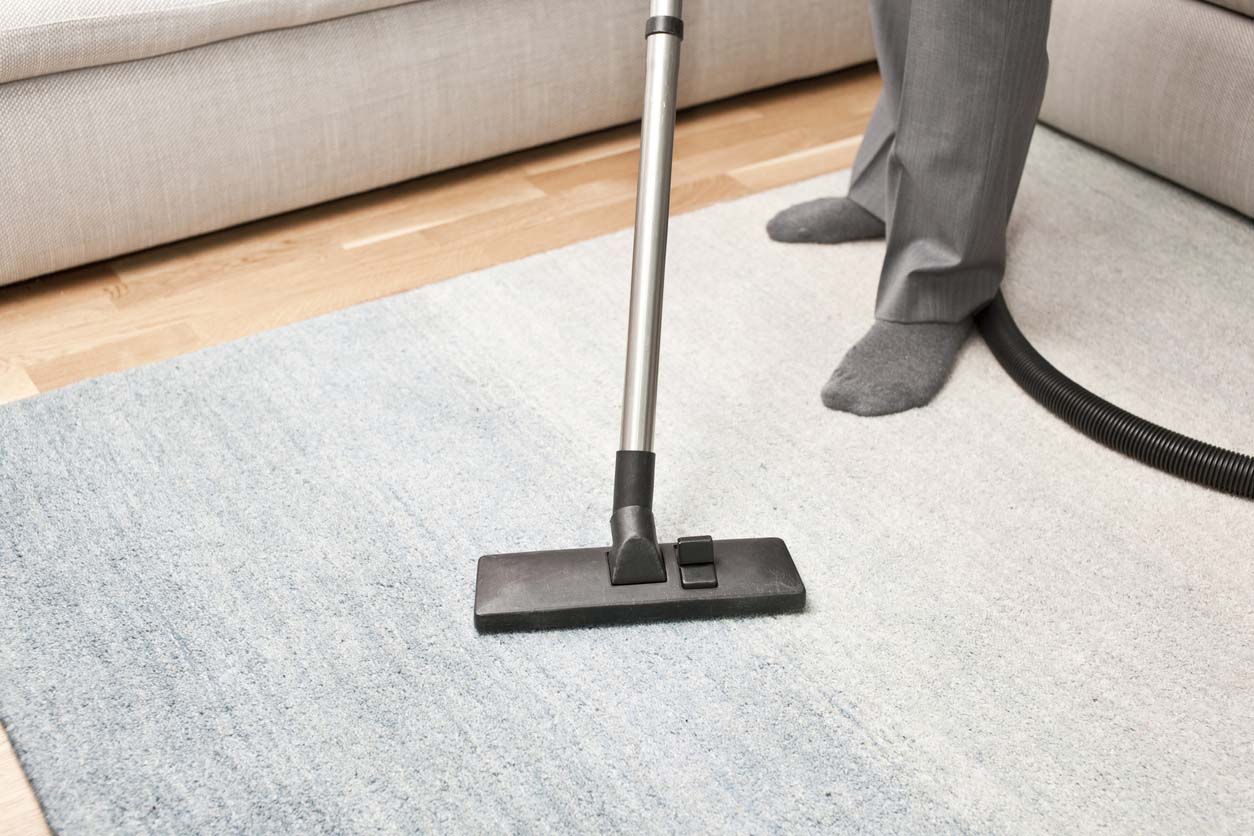
Types of Central Vacuum Systems
Homeowners can choose from more than one type of central vacuum system. The best option for them depends on their preferences and budget, and there are even RV central vacuum systems available for those who prefer such an option in their recreational vehicle. But for a typical home, cyclonic or filtered systems are the two main types, and each comes with its own advantages and price points.
| Type of Central Vacuum System | Average Cost (Materials and Labor) |
| Cyclonic | $600 to $3,500 |
| Filtered | $1,000 to $3,500 |
Cyclonic
Unlike traditional vacuum systems that rely on bags or filters to trap dirt, a cyclonic central vacuuming system doesn’t need either. Instead, it relies on centrifugal force to separate debris.
The system spins air rapidly and creates a vortex effect that forces debris to the sides of the collection container as it’s pulled in during use. Models with external venting expel finer dust particles out of the home, enhancing air quality. However, unvented models may require more frequent maintenance and cleaning to manage dust accumulation.
A cyclonic system is known for its strong suction power, making it an excellent investment for homeowners looking for a central vacuum system that can keep up with a large family with pets. Depending on the size and brand, cyclonic central vacuum systems cost between $600 and $3,500 to install.
Filtered
As the name suggests, filtered central vacuum systems incorporate multilayered filtration methods using either paper or cloth filters. They’re particularly effective at trapping dust and allergens within the debris receptacle. They also tend to maintain consistent suction power over time and come in both bagged and bagless models, offering homeowners more options to suit their preferences.
Filtered central vacuum systems have a higher starting price than cyclonic models at $1,000. But they have the same top price of $3,500 while offering more features and benefits, such as enhanced air filtration and suction stability. However, it’s worth noting that cyclonic systems are more efficient for larger homes.
Benefits of Choosing to Install a Central Vacuum System
The benefits of choosing a central vacuum system go beyond the convenience of built-in suction throughout the house. From low maintenance requirements to improved air quality, there are many reasons for homeowners to invest in a central vacuum system.
Faster and Easier Cleaning
Central vacuum cleaner systems make cleaning more efficient and convenient. First, they provide powerful suction and a large-capacity collector, offering more effective cleaning than traditional vacuums.
And with strategically placed outlets, there’s no need to drag a heavy vacuum cleaner from room to room or up and down the stairs. This is particularly beneficial for those with mobility issues or who live in homes with multiple levels.
The convenience of quick cleaning with a central vacuum and automatic dustpans can make a daunting chore seem easier. Homeowners with a central vacuum cleaner system often find themselves vacuuming more often, and frequent vacuuming can reduce allergens, extend carpet life, and contribute to a neater and tidier home.
Improved Air Quality
Homeowners who switch to good central vacuum systems often experience decreased respiratory issues and enjoy fresher, cleaner indoor air.
Poor air quality in a home can lead to various health issues and symptoms for residents, including respiratory problems; allergic reactions; fatigue; headaches; and irritation of the eyes, nose, and throat. However, a central vacuum system can help improve the air quality in a home by efficiently removing dust, pet dander, and other allergens.
Rather than breathing in the exhaust air from a traditional vacuum (that’s often filled with particles that weren’t effectively trapped), residents can breathe easier when using a central vacuum that pulls all debris straight into the hose, through the home’s tubing, and into the collector. Additionally, central vacuum systems have more advanced filtration systems than portable vacuums and are more effective at trapping small particles or venting them directly outside.
Decreased Noise
Portable vacuums can be loud and are sometimes even disruptive. Central vacuum systems tend to be quieter since the power unit is located farther away from the area being cleaned. This distance helps foster a less disruptive experience. Lower noise levels during cleaning can help reduce stress and create a more relaxing atmosphere. This can be especially beneficial in homes with young children who are light sleepers, individuals sensitive to loud noises, or nervous pets.
Central vacuuming can be done at nearly any time of day with less noise. Household members or neighbors are less likely to be bothered, making it easier for homeowners to fit their cleaning routines into their unique schedules.
Long Lifespan
Central vacuum systems are built to last. They’re designed for long-term use and tend to require fewer replacements or repairs, while portable vacuum cleaners may only last a few years. Homeowners who install a central vacuum system can come to rely on their home’s cleaning system and enjoy long-term cost savings.
But the advantage isn’t just in the number of operational years; it’s also in the quality of performance. Central vacuums maintain their efficiency over time. Where standard vacuums tend to decline in power, efficiency, and suction, central vacuum systems offer more consistent performance for a clean home without excessive unit maintenance.
Low Maintenance Requirements
Central vacuum systems offer more reliable cleaning with less monitoring and worry. Typical maintenance for central vacuum systems includes:
- Emptying the central unit’s large debris collector or replacing the bag on occasion
- Cleaning or replacing filters as needed
- Checking for clogs or obstructions in the hoses as needed
- Checking and cleaning vacuum attachments
On the other hand, a portable vacuum requires more frequent emptying of the smaller dust bags or canisters, not to mention homeowners having to inspect squeaky belts and other loose or broken parts. And cordless models can be annoying when only a quick clean is needed but the unit is charging. Central vacuum systems allow homeowners to focus on enjoying a clean home, not constant maintenance.
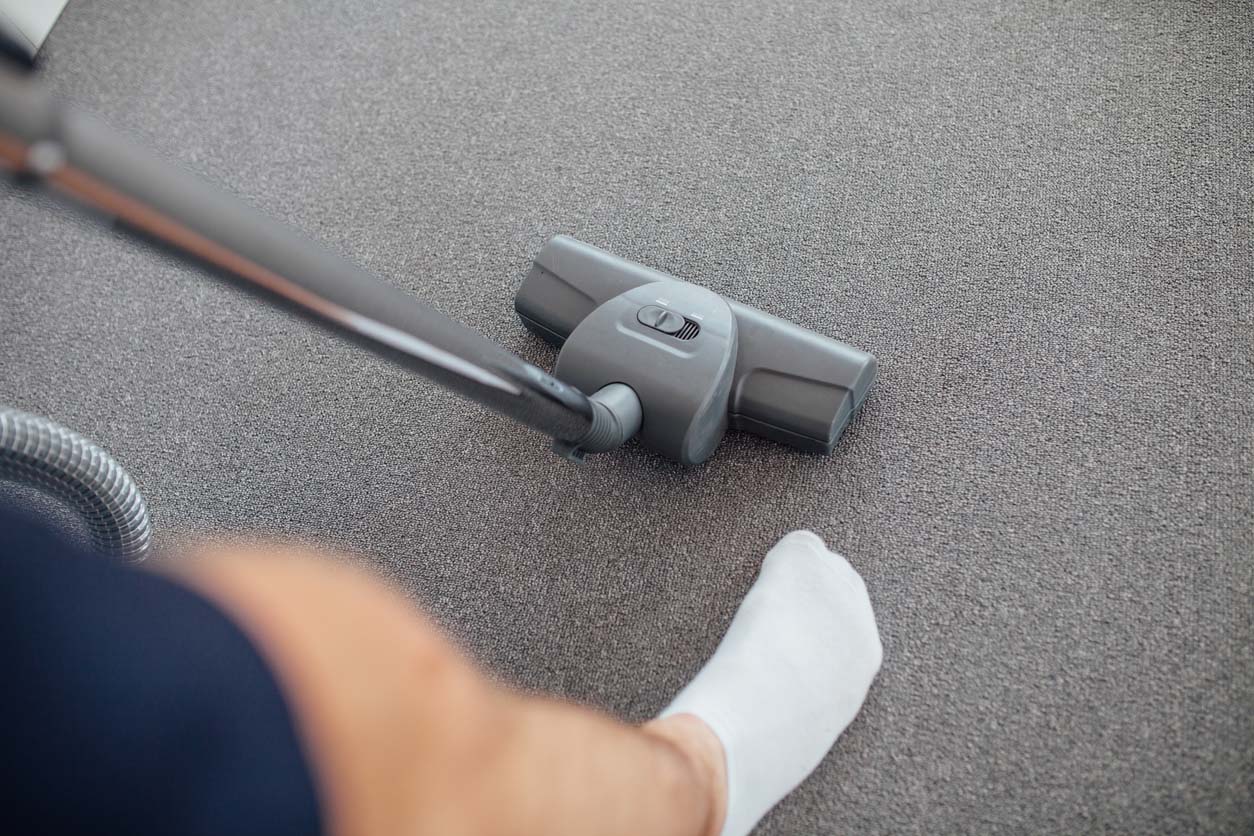
Central Vacuum System Installation: DIY vs. Hiring a Professional
Installing a central vacuum system comes with a price tag. After adding up the cost of the system itself, any add-ons, and the cost of labor, a homeowner may wonder whether it’s possible to install a central vacuum system on their own. While it’s valiant for homeowners to want to consider DIY installation to save money, there are pros and cons to hiring a contractor versus DIY-ing a central vacuum system installation.
The main benefit of DIY installation is that it can save on labor costs. Homeowners who take on a DIY installation can also work around their own schedule and at their own pace. However, installing a central vacuum system can be a complex undertaking. It involves electrical work and modifications to a home’s structure. Mistakes can be dangerous, and repairs can be expensive and time-consuming.
On the other hand, hiring a professional contractor to install a central vacuum system has a list of benefits.
- Expert installation: Professionals have the necessary skills and experience to install a central vacuum system correctly.
- Safety assurance: Professionals are trained to handle electrical and structural challenges.
- Time savings: A professional can install a central vacuum system more quickly than a homeowner can complete a DIY installation.
- Access to quality materials: A professional has access to the right materials and often at better prices, which helps homeowners find the best central vacuum system for their homes.
- Warranty and support: Professionals often include warranties on their installations.
While deciding between hiring a professional and taking the DIY route comes down to experience and budget, the advantages of working with an experienced contractor can’t be overlooked.
How to Save Money on Central Vacuum Cost
Although a central vacuum installation has many benefits, it’s definitely an investment that warrants deliberation. The cost of a central vacuum system will require some budget planning, but there are several ways for homeowners to trim costs without sacrificing quality.
- Get several quotes: Homeowners who take the time to shop around and compare quotes from different installers are more likely to get a better deal.
- Limit add-ons: While all the bells and whistles would be nice, homeowners can stick with a standard yet efficient model to keep costs down.
- Shop sales: Looking out for sales or special promotions on central vacuum system prices or installation services can help homeowners save on the final price.
- Stick to a budget: Setting a realistic budget is important, so sticking with one of the best vacuums under $200 while saving up for a central vacuum system can help alleviate financial stress.
- DIY some tasks: Installing a central vacuum system is a complex job that’s best left to the professionals. However, a homeowner may be able to handle some of the prep work or finish work to reduce labor costs.
Questions to Ask About Central Vacuum Installation
When having a central vacuum system professionally installed, it’s crucial for homeowners to ask potential contractors the right questions to ensure the job is successful and expectations are met.
- What is a central vacuum system?
- How experienced are you with central vacuum system installation?
- Are you licensed and insured for this type of work?
- Do you have a portfolio or list of references you can provide?
- Can you provide me with a detailed quote for the system and installation?
- How long will the installation take?
- Do I need to be home for the entire installation?
- What type of central vacuum system do you recommend for my house?
- Should I install a vented or unvented system?
- How powerful a unit should I install for my house?
- What add-ons do you recommend based on my lifestyle and needs?
- Is a house central vacuum system worth it?
- Do you offer a warranty or service plan?
- How do I maintain a central vacuum system?
- Who can I contact for future service or support?
FAQs
A central vacuum system offers a simpler and more efficient way to clean a home. Thanks to their noise reduction, allergen control, and low maintenance requirements, central vacuum systems are gaining popularity and earning a positive reputation among homeowners and home designers alike. To learn more about central vacuum system costs, features, and benefits, homeowners can explore the following FAQ section for additional insights.
Q. How long does a central vacuum system last?
Two of the top benefits of central vacuum systems are their durability and longevity. With proper care, a central vacuum system can last 20 years or more, often outlasting traditional portable vacuum cleaners. However, it’s worth noting that while the central power system and in-wall piping system can last decades, it’s common for hoses and attachments to wear out and require replacement.
Q. What are the disadvantages of central vacuums?
Some of the disadvantages of central vacuums include their installation cost, maintenance schedule, and storage space. Purchasing and installing a central vacuum system can cost as much as $3,500. And while central vacuum systems can operate for years without maintenance, attentive homeowners may prefer to schedule regular service appointments from central vacuum service technicians.
Finally, while most of the system is in the walls and garage or basement, the longer hoses and attachments will still need their own storage places. Many homeowners find it more convenient to buy and store hoses on each level of a home, which will require additional money up front and extra storage space.
Q. Where is the best place to put a central vacuum?
It’s best to place a central vacuum system’s power unit in a dry, cool area with minimal foot traffic, such as a basement or garage. Finding the right location helps reduce the noise that enters common living spaces.
Q. Do central vacuums add value to a house?
Central vacuums do not substantially increase the value of a house. However, they do enhance the home’s appeal to potential buyers. Since central vacuum systems offer convenience and efficiency, they’re viewed as a desirable feature and can be marketed as such. As a result, a central vacuum system could lead to a quicker home sale.
Q. How powerful a central vacuum do I need?
Finding a central vacuum system with the appropriate amount of power for a home starts by knowing the square footage of the space the system needs to service. To ensure adequate suction at all inlets, it’s recommended for homeowners to choose a unit with a rating double that of a home’s square footage. For most 2,500-square-foot homes, a system with 600 to 800 air watts offers just the right amount of power. Larger homes may require at least 1,000 air watts.
Sources: HomeAdvisor, Central Vacuum Direct, Fixr
